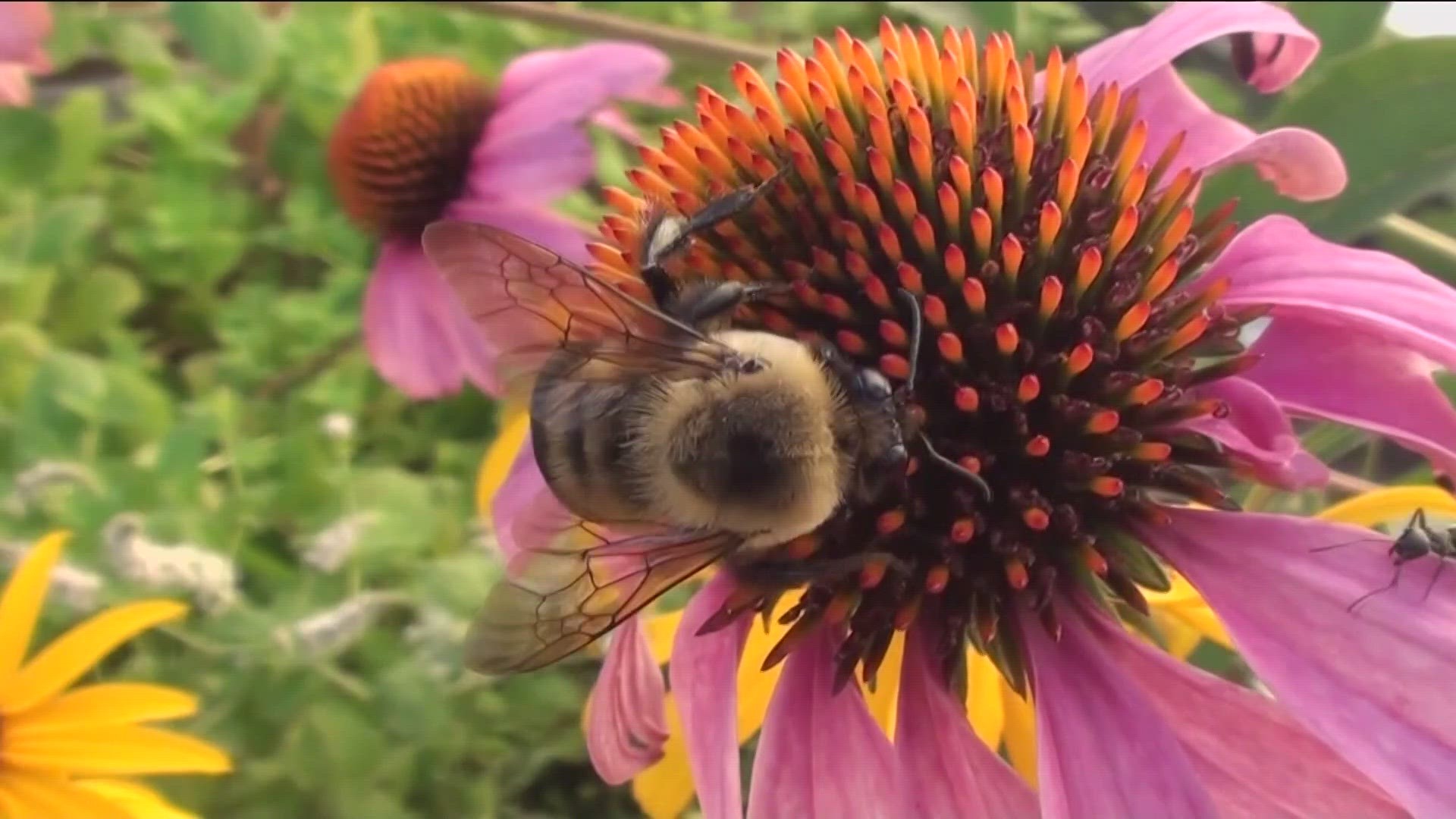SAN DIEGO — After years of drought, the bee populations have been decimated. Winter brought record rain and a Super Bloom, which meant a lot of pollen and nectar and bee populations have rebounded.
The return of these healthy hives is a direct result of the Super Bloom and the abundance of food from all the flowers, according to Travis Wolfe who is the head beekeeper for Bee Leaf USA.
"We've got some really robust colonies here. They're exploding with bees coming and going every couple of seconds. You can look at 10 bees per second coming in and out of the hives," continued Wolfe. "So, health-wise the bees are doing very, very, very, good. We have seen different flowers that typically don't pop up, simply because we are in such a drought area of California. But this winter the record rains changed that, and the bees are benefitting two-fold."
"In fact what it has done, is it helped increase the population first. Bees being our overall collectors of nectar, the population shot up after the rains. Now they're on this massive honey collection and the bees are storing it away, it's wonderful to see at this point," said Wolfe.
Bees are usually brought in as pollinators for different crops but this year with the Super Bloom Wolfe says to expect to see a lot more wildflower honey.
"So that will force the bees to gain all the extra food from right there, and thus shooting up all the wildflower honey we see on our shelves, roadside stands, and ultimately at the farmer's markets and stuff like that," said Wolfe.
For bees to make honey is no easy task. First, the bees collect the nectar using their tongue and store it in their stomachs where digestive enzymes start the honey-making process. When they return to the hive they transfer the nectar to another bee, this is done multiple times to get more of the enzymes.
The enzymes help turn the nectar into fructose and glucose, at this point the liquid is put into the honeycomb and then bees will beat their wings like little fans to evaporate nearly 80% of the moisture. A wax cap is then put on for the final transformation to honey.
Besides the abundance of honey, the healthy hive will split and swarm to make a new colony
"So, the first initial queen will be the one that leaves with a swarm of bees, 40% - 60% that depends on the time of day and the bees that can fly with her," said Wolfe.
The reason for leaving the hive is overcrowding, too much honey, or they're looking for a new food source. We'll see both as the backcountry dries out.
"A lot of those locations most likely will be urbanized areas where we see gardens, where people are watering plants and food and stuff like that," added Wolfe.
Some of the bees will make their way West looking for that perfect microclimate with abundant nectar.
"We expect to see a lot of them just west of the 15 as you're going up the highway just before you drop down to the coastal area," said Wolfe.
So, the next phase of this record rain and Super Bloom are these bees are going to be heading West with a swarm and if they do end up in your garden, Bee Leaf USA will help you relocate the hive to a safer place.
Watch Related: Bee season: How to safely remove bees and home remedies (Jun 7, 2022)

